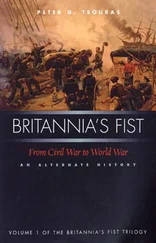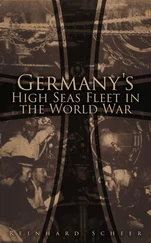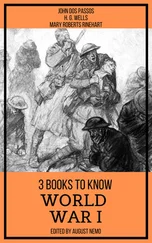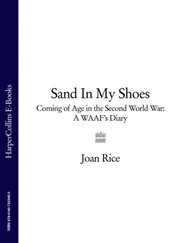Tanks are not yet in production, but the present delivery rate of Universal Carriers is approximately 20 per month. A contributory factor to this comparatively low output is the limited orders that have been placed for bullet-proof steel and component parts such as tracks, suspension gear and sprockets.
To ensure deliveries of Armoured Fighting Vehicles in quantity, it is necessary that supplies of bullet-proof steel and components be readily available. Manufacturers would then be able to plan production over a period of at least 12 months. It is, therefore, essential that orders for the full requirements in materials and components be placed without delay.
Moreover, it is understood that the Director-General of Munitions desires that complete orders be placed for all requirements, so that manufacturing firms and factories may plan for the maximum productive effort.
Military Board’s recommendation
The Military Board is of the opinion that the early supply of Armoured Fighting Vehicles in quantity is essential, and recommends that approval be given to place orders at once for the full requirements of 850 Cruiser tanks and 2012 Carriers.
The submission included an appendix with an organisation chart for an armoured division and a detailed table listing the personnel, transport and weapons that the division would require. This Australian armoured division was described as being equivalent to the British armoured division of 1940. It had two armoured brigades, each of three armoured regiments and a motor battalion, a support group containing a regiment of field artillery and an antitank regiment and various ancillary troops.
It was, in fact, not quite equivalent, in that the British division had two infantry battalions in the support group, not in the armoured brigades, and two field regiments and one anti-tank regiment of artillery. The infantry/tank balance in these organisations was later regarded as rather too heavy in tanks and, as the war progressed, the infantry strength was increased until it reached the more efficient ratio of one to one.
In the proposed Australian division of 1940, the tank strength comprised:
| Armoured Division HQ |
8 |
| Armoured Brigade HQ (x 2) |
20 |
| Armoured Regiment (x 6) |
312 |
| TOTAL |
340 |
Each regiment comprised forty-six gun tanks armed with 2-pdrs, and six close support tanks armed with 3-inch mortars. In addition, there were 111 general purpose universal carriers and twenty-four universal carriers mounting a 2-pdr anti-tank gun.
The armoured division thus required 340 tanks and 135 universal carriers, to which were added the requirements for the 1st Australian Corps and the AMF, all figures augmented by an allowance for anticipated wastage. The resulting quantities were detailed in Agendum 150/1940. Supplement 1 to Agendum 150/1940 was submitted two weeks later, and asked for ‘armament other than AFVs’.
Both the initial submission and Supplement 1 were approved by Street, and were sent on by him to the War Cabinet. At the meeting of 2 July 1940, Cabinet granted conditional approval to the requests made in both documents, and recorded that approval in Minute 375, which stated:
MEETING OF WAR CABINET 2 July 1940
Minute 375; Agendum 150/1940; Production orders for AFVs
(Previous reference War Cabinet minute 363)
War Cabinet considered the opinion of the Military Board that the early supply of AFVs in quantities is essential, and its recommendations that:
a. approval be given to place orders for the full requirements of 859 cruiser tanks and 2012 universal carriers and
b. the additional amount of £14,270,000 be made available.
It was decided that:
i. a cablegram be sent to the UK Government
a. furnishing advice of the type of tank that the Commonwealth intends to produce, enquiring the type or types of tanks on which they are concentrating, in view of the recent statement by their Minister for supply on this subject, and asking for observations on our proposal
b. requesting the loan or exchange of a few officers, say up to the number of four, who have had recent experience with armoured divisions.
ii. The Director General of Munitions be asked to advise on how the proposal of the Military fits in with the munitions program for the army already approved on Agendum 141/1940 [see War Cabinet minute 363], in so far as the various considerations of allocation of productive resources, supplies of material and the time factor are concerned. 48
This minute shows the interaction between Agenda 141/1940 and 150/1940. It is important to note that the production of tanks is not specifically approved. That approval is contingent on responses from the UK Government and the Director-General of Munitions. The minute makes no mention of the formation of an armoured division and there is no guidance as to how the tanks will be used. The two relevant statements in the introduction to 150/1940 are that ‘an army must possess a preponderance of tanks’ and that ‘the most effective defence against the AFV is the AFV’. However, nothing reflecting these two statements in contained in Minute 375.
The creation of an armoured division in 1940 would have meant the diversion of a considerable amount of manpower to the division itself and even more to the manufacture of the equipment it required. Cabinet had to weigh up the benefits of creating a strong, mobile and modern armoured force against its costs. The immediate costs would include a reduction in the number of infantry divisions that could be sent overseas or used for the defence of Australia; it could also mean a decrease in the number of people available for the Navy and Air Force.
The use of industrial resources for equipping the armoured division would divert manpower from production for the rest of the Army, for the production of aircraft and ships, for maintenance and the development of infrastructure such as railways and wharves. Was the Government of mid-1940 equipped with the knowledge or experience to make these decisions, or did it have sources from which it could obtain reliable advice? The second Menzies ministry lasted from 14 March to 28 October 1940, and contained only two members with direct military experience —Geoffrey Street and James Fairbairn. The use of tanks was a matter of military technology, and thus the Australian War Cabinet needed specialist advice◦— which it lacked. The various CGS from the beginning of World War II had all served with distinction, but their experience of the use of tanks was a matter of hearsay rather than direct involvement.
The only officer of any seniority who had training in the use of tanks was Lieutenant Colonel Ronald Hopkins. Hopkins had long been an advocate of an armoured component for the Australian Army, although the development of such a force in the 1930s was extremely slow.
Early in 1936, Colonel V.A.H. Sturdee, Director of Military Operations, pressed the case for establishing tank training. 49His proposal included the training of staff and instructors in Britain and the purchase of modern tanks for training tank crews. The problem with the latter item was that the British medium tanks were, at that time, prototypes and the Light Tank Mark VI was the only tank in production.
Hopkins had been sent to Britain in 1937 to undertake comprehensive training with the RTC. The program had included basic training in tank skills at Bovington and Lulworth, manoeuvres with the RTC Light Battalion, appointment as GSO (Training) to the Mobile Division formed in 1938, and then a posting to the AFV section of the War Office General Staff.
While Hopkins’ experience was undoubtedly valuable, there were caveats. The tanks used were almost all obsolescent and British tank doctrine was subject to change and swayed by varied opinions. In addition, the training conducted was primarily at the tactical level. None of this, useful though it was, provided any guidance that would answer the Australian Government’s fundamental questions concerning the use of tanks and their benefits to the country.
Читать дальше












